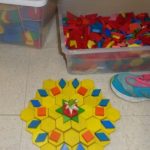 This week’s post is illustrated with photographs taken by Samantha, our third class photographer.
This week’s post is illustrated with photographs taken by Samantha, our third class photographer.
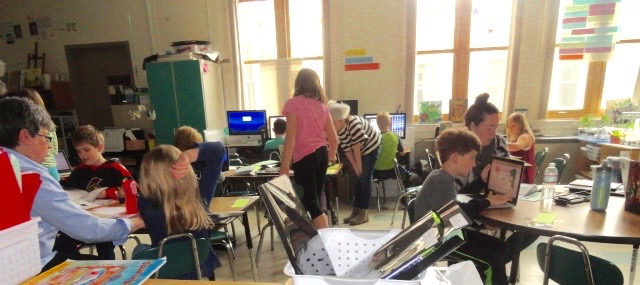 Another week has flown past. It has been full of planting and replanting, observing and reviewing expectations. How do scientists keep records, charts and graphs? It has been full of state discoveries too. We’ve been identifying state heroes and important state structures – manmade wonders. Perhaps the most exciting part of our week is yet to come as I write this. The 3rd grade school-wide assembly celebrating our country is this morning.
Another week has flown past. It has been full of planting and replanting, observing and reviewing expectations. How do scientists keep records, charts and graphs? It has been full of state discoveries too. We’ve been identifying state heroes and important state structures – manmade wonders. Perhaps the most exciting part of our week is yet to come as I write this. The 3rd grade school-wide assembly celebrating our country is this morning.
Celebrating our Country
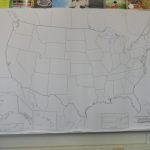 We’ve been practicing and preparing for our assembly for quite a while now. Mrs. Oliver has been a great help to us. We’ve been learning The 50 States that Rhyme for over a month and many of us have mastered the whole song. We’ve reviewed and practiced America the Beautiful too. Both of those songs are part of our assembly. This week we practiced where we’d stand and what we’d say. We’ve been through the assembly ourselves and now it’s time to present.
We’ve been practicing and preparing for our assembly for quite a while now. Mrs. Oliver has been a great help to us. We’ve been learning The 50 States that Rhyme for over a month and many of us have mastered the whole song. We’ve reviewed and practiced America the Beautiful too. Both of those songs are part of our assembly. This week we practiced where we’d stand and what we’d say. We’ve been through the assembly ourselves and now it’s time to present.
Students from 3CL will introduce our celebration and a slide show of past students’ floats. We’ve been holding a Parade of the States for quite a while. This year will be our 7th annual parade. After the slide show, our very own Katie and Gavin will introduce our first song. We’ll sing The 50 States that Rhyme through once and invite the older students to join us for the second time through. We hope it sounds amazing. Once the song is finished, Sully and Lucy will begin our Rally of the U.S.A. Both classes prepared region maps, which when put together will be our whole country. Sully will be asking 4th through 8th graders to stand when the region their float represented is presented. Pre-K through Grade 2 will have flags to wave, while they cheer this process along. At the end of the map presentation, members of 3CL will ask everyone to stand and join us in singing America the Beautiful. And then we’re done. We hope it’s a fun celebration. We’ll post pictures as soon as we have them.
U.S. Geography
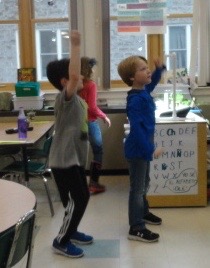 The class has begun researching and exploring the “Wonders” of their states. It is interesting to note how this project has changed over the years. Search engines put so much information in kids’ hands, but they are not the best place to begin. The tricky part is helping them recognize that starting with a search such as, “what are manmade wonders in _____” will give them information about many, many things. Some though cool, will have little researchable (if that’s a word) information. Nor will they actually represent the state. They’re just cool!
The class has begun researching and exploring the “Wonders” of their states. It is interesting to note how this project has changed over the years. Search engines put so much information in kids’ hands, but they are not the best place to begin. The tricky part is helping them recognize that starting with a search such as, “what are manmade wonders in _____” will give them information about many, many things. Some though cool, will have little researchable (if that’s a word) information. Nor will they actually represent the state. They’re just cool!
As I listen to them explore and read and reflect, the children are coming to these conclusions on their own. Many are recognizing that the best place to begin their search is with their books. Images and topics that are in all of them are good places to start. Things mentioned in the many books we have summarizing our country, are also places to begin. Once “wonders” have been identified that way, the search for information is more likely to be fruitful.
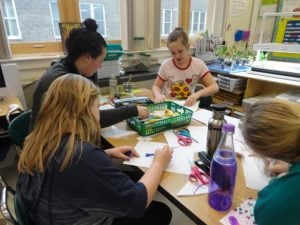 I am also hearing children be more mindful of their time. They are more focused and less likely to spend a whole class period searching through pictures. We’ve reviewed writing expectations. We’ve reminded ourselves about leads and conclusions, using strong words and crafting interesting sentences. Our writers’ workshop is becoming a more focused and productive place.
I am also hearing children be more mindful of their time. They are more focused and less likely to spend a whole class period searching through pictures. We’ve reviewed writing expectations. We’ve reminded ourselves about leads and conclusions, using strong words and crafting interesting sentences. Our writers’ workshop is becoming a more focused and productive place.
Planting – Replanting – Observation
We first planted our seeds on March 7, 8 and 9. Some of the seeds sprouted and are thriving, while other did not. Throughout this time the children have been learning how to make observations that actually document change over time. It is just now making sense to them that “getting bigger” doesn’t offer much information when written day after day.
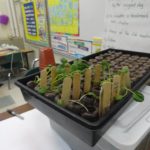

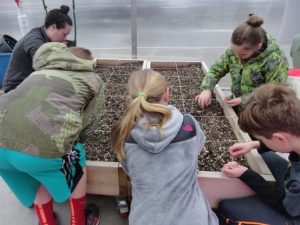 At this point in the observation process, the children are more aware of the need to be more specific. They need to measure. They need to record one thing over time, rather than changing day to do. Some children are really excited to have a record they can come back to. Other children are happy to see, and care little for the record. The expectation of this process is that students know what a complete sentence is when making an observation. And that one series of observations done in a week capture enough information and data that the students can make claims and have to date to support their statements.
At this point in the observation process, the children are more aware of the need to be more specific. They need to measure. They need to record one thing over time, rather than changing day to do. Some children are really excited to have a record they can come back to. Other children are happy to see, and care little for the record. The expectation of this process is that students know what a complete sentence is when making an observation. And that one series of observations done in a week capture enough information and data that the students can make claims and have to date to support their statements.
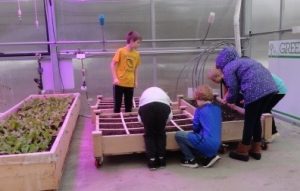 We have taken our first broccoli seedling out to the greenhouse and planted them there. Not everyone had seedling to plant this first time. Their seeds did not sprout. We replanted on Wednesday and already have seedlings showing in our second round. Our goal is that every student will have a seedling out in the greenhouse by April 14. While out in the greenhouse we’ve been weeding and sweeping and preparing the beds for the other classes as well. In addition to our plants, there are lettuces, peppers and tomatoes growing. Even if it’s snowing, the greenhouse reminds us the spring will show up for sure.
We have taken our first broccoli seedling out to the greenhouse and planted them there. Not everyone had seedling to plant this first time. Their seeds did not sprout. We replanted on Wednesday and already have seedlings showing in our second round. Our goal is that every student will have a seedling out in the greenhouse by April 14. While out in the greenhouse we’ve been weeding and sweeping and preparing the beds for the other classes as well. In addition to our plants, there are lettuces, peppers and tomatoes growing. Even if it’s snowing, the greenhouse reminds us the spring will show up for sure.
Bits and Pieces
- We are now in our third part of Wonder. We’re learning of events from Summer’s perspective. She’s someone who befriended August on the first day of school.
- We’ve been exploring equivalence in math. We’ve been challenged to think of the = sign as a balance. We’ve been exploring this idea with all four operations and that has been challenging. Challenging in a good way though because we have to really stop and think about each math sentence.
- Thanks to Mrs. Duffy for Game Club! It is great fun. Thank you too for the delicious snacks each week.
- We’re creating state cartoons in technology. Soon we’ll be animating them and posting on our blogs.
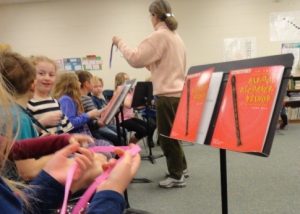 We got our recorders this week in Music. It is exciting to use what we’ve been learning about reading and writing music to play an instrument now.
We got our recorders this week in Music. It is exciting to use what we’ve been learning about reading and writing music to play an instrument now.
Thanks for all you do to support and extend what’s happening in our classroom.
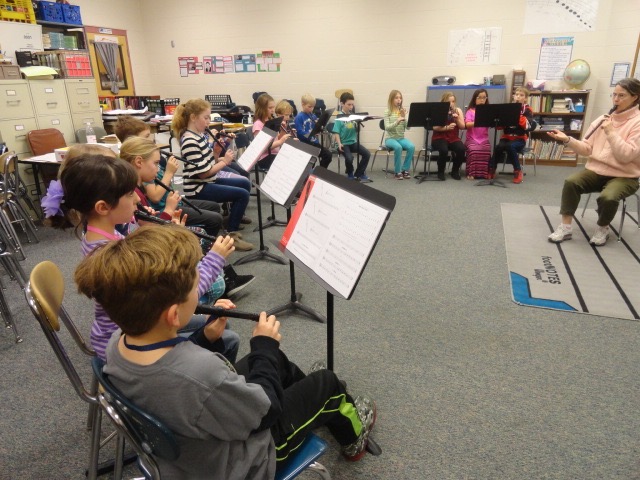
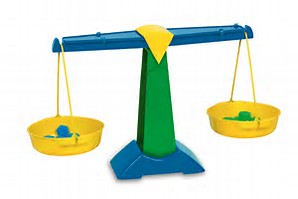 We’ve been learning more about equivalence. We’ve been balancing equations. We’ve realized that = doesn’t mean a final answer. These can be a challenge, but we can do them if we slow down and think about our math process.
We’ve been learning more about equivalence. We’ve been balancing equations. We’ve realized that = doesn’t mean a final answer. These can be a challenge, but we can do them if we slow down and think about our math process.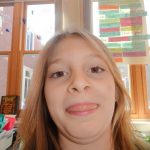
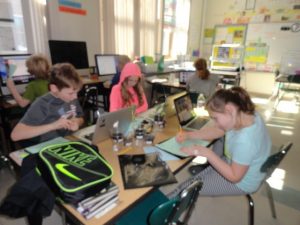 The 50 States that Rhyme for our Assembly next week and lots more. We are busy, but in an exciting way because we are exploring many new ideas and learning lots.
The 50 States that Rhyme for our Assembly next week and lots more. We are busy, but in an exciting way because we are exploring many new ideas and learning lots.

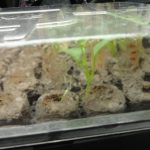 This week we have continued to observe and record observations of how our seeds are growing. I can’t say we’re actually recording like scientists, but the children are beginning to recognize that “it’s bigger” doesn’t prove much. Almost all of them have begun to measure stems and to count leaves. They’ve begun to record colors and some have begun to create illustrations that show as many details in size, shape, texture and color as they can show.
This week we have continued to observe and record observations of how our seeds are growing. I can’t say we’re actually recording like scientists, but the children are beginning to recognize that “it’s bigger” doesn’t prove much. Almost all of them have begun to measure stems and to count leaves. They’ve begun to record colors and some have begun to create illustrations that show as many details in size, shape, texture and color as they can show.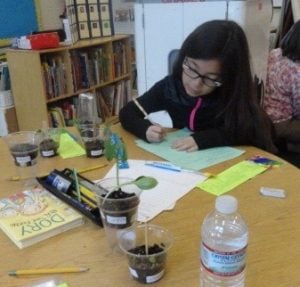 Next week, we’ll be planting our broccoli in the greenhouse. At that point, we’ll be using what we’ve learned about data collection to more accurately record the changes in our plants. We’ll also begin a second experiment in the classroom to compare the growth of two different types of seeds. And finally we’ll be conducting and experiment so we can learn how genes are passed on through generations. Science is exciting. It all begins with observing and wonder why.
Next week, we’ll be planting our broccoli in the greenhouse. At that point, we’ll be using what we’ve learned about data collection to more accurately record the changes in our plants. We’ll also begin a second experiment in the classroom to compare the growth of two different types of seeds. And finally we’ll be conducting and experiment so we can learn how genes are passed on through generations. Science is exciting. It all begins with observing and wonder why.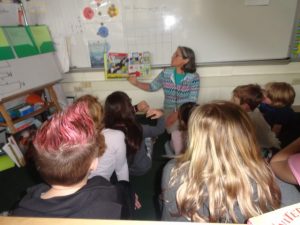 In the classroom the children are excited about our new research project. We’ve begun to explore State Symbols and people who are famous, or State Heroes. These are Wonders 1 and 2. We are trying to keep the children focused on these research topics so that time doesn’t slip away from them. In the classroom we’ve been reading books that explore all of the states. We’ve read books like The United Tweets of America, Austin Lost in America and books from The Travels with Charlie series. These books mention one or two fun facts from each state. We are reading these as a way to help the children recognize what others consider “wonder”ful and interesting about their states. The classroom has been full of excited comments, renewed interest in biographies and another close look at maps and atlases.
In the classroom the children are excited about our new research project. We’ve begun to explore State Symbols and people who are famous, or State Heroes. These are Wonders 1 and 2. We are trying to keep the children focused on these research topics so that time doesn’t slip away from them. In the classroom we’ve been reading books that explore all of the states. We’ve read books like The United Tweets of America, Austin Lost in America and books from The Travels with Charlie series. These books mention one or two fun facts from each state. We are reading these as a way to help the children recognize what others consider “wonder”ful and interesting about their states. The classroom has been full of excited comments, renewed interest in biographies and another close look at maps and atlases.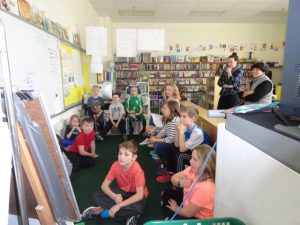 I will work to keep you informed all along the way in this exciting project. There’s a blog post showing floats from the past so families have a chance to think together about possibilities. Our hope is that the float will be the work of the children – but of course they will need your help. They’ll need your help in making ideas a reality. They’ll need your help in sticking to a timeline that will lead them to success. (They probably don’t have realistic understandings of the amount of time required to build certain kinds of things.) The float building won’t begin until the end of April. By then your child will have clearly identified the Wonders s/he wants to represent on the float and will have created a blueprint. These will be approved by the “building inspector” (me) and then the children, will your help, will create their floats. Math problems posts (I ran out of time this week) will include several different float examples with problems about those states. Our hope is that by the time the float part of the project begins everyone will feel confident and ready. Please let me know if you have any questions along the way.
I will work to keep you informed all along the way in this exciting project. There’s a blog post showing floats from the past so families have a chance to think together about possibilities. Our hope is that the float will be the work of the children – but of course they will need your help. They’ll need your help in making ideas a reality. They’ll need your help in sticking to a timeline that will lead them to success. (They probably don’t have realistic understandings of the amount of time required to build certain kinds of things.) The float building won’t begin until the end of April. By then your child will have clearly identified the Wonders s/he wants to represent on the float and will have created a blueprint. These will be approved by the “building inspector” (me) and then the children, will your help, will create their floats. Math problems posts (I ran out of time this week) will include several different float examples with problems about those states. Our hope is that by the time the float part of the project begins everyone will feel confident and ready. Please let me know if you have any questions along the way.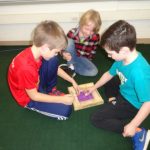
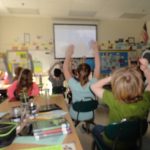

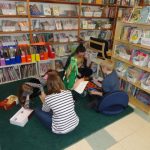

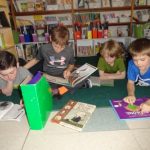
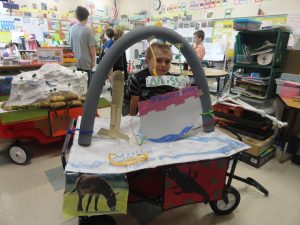
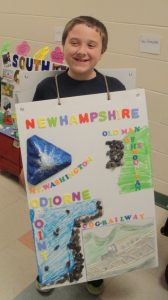
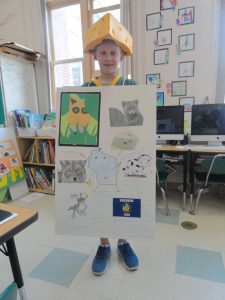

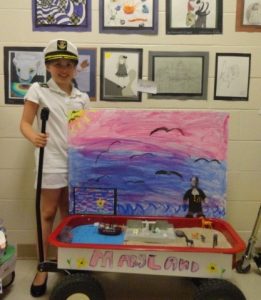
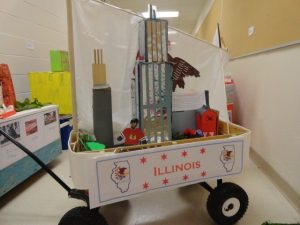
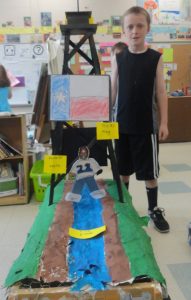
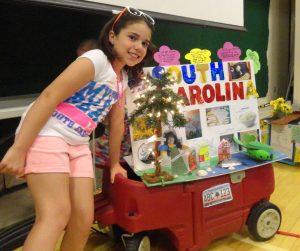
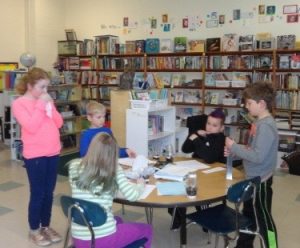
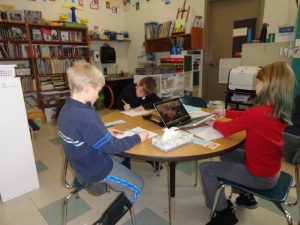 I believe you all received a letter from the office Wednesday providing information that will help you navigate this term’s report card. If you did not, please let me/us know so we can help you with that.
I believe you all received a letter from the office Wednesday providing information that will help you navigate this term’s report card. If you did not, please let me/us know so we can help you with that. As you know from your weekly 3E News bulletins, many in our class struggle to manage their behavior. This struggle is likely to show on this term’s report card. Students may not meet expectations, not because they can’t, but because they don’t. For example, if you chat during writing time, rather than writing – you cannot meet expectations. You simply have not produced a large enough body of evidence. If you choose skip reading assigned chapters – you are not meeting expectations. You do not have consistent evidence of comprehension and fluency. If you solve one math problem when the expectation is six- you are not meeting expectations.
As you know from your weekly 3E News bulletins, many in our class struggle to manage their behavior. This struggle is likely to show on this term’s report card. Students may not meet expectations, not because they can’t, but because they don’t. For example, if you chat during writing time, rather than writing – you cannot meet expectations. You simply have not produced a large enough body of evidence. If you choose skip reading assigned chapters – you are not meeting expectations. You do not have consistent evidence of comprehension and fluency. If you solve one math problem when the expectation is six- you are not meeting expectations.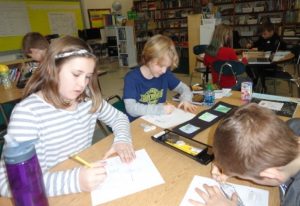 I can hear the voices in our classroom, “but I can do it” or, “I would have done it if…” They are absolutely right! They can meet expectations if they choose habits leading toward success. Please let your child know we are certain s/he can each do everything and anything they decide to do. They can do many great things – consistently and independently, should they choose.
I can hear the voices in our classroom, “but I can do it” or, “I would have done it if…” They are absolutely right! They can meet expectations if they choose habits leading toward success. Please let your child know we are certain s/he can each do everything and anything they decide to do. They can do many great things – consistently and independently, should they choose.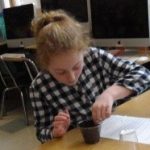
 Planting and growing is one of the projects we are doing that is time sensitive. We have three experiments going at this time and are planning a fourth when we are sure of four consecutive days of school.
Planting and growing is one of the projects we are doing that is time sensitive. We have three experiments going at this time and are planning a fourth when we are sure of four consecutive days of school. We began the selection process for our states. We’ve been reading short books about many of the state in different areas of the country. We’ve been looking at Western states, Mid-Western states, Southern states and North-Atlantic states. It’s been fun to learn a little about what’s special in each place in our country.
We began the selection process for our states. We’ve been reading short books about many of the state in different areas of the country. We’ve been looking at Western states, Mid-Western states, Southern states and North-Atlantic states. It’s been fun to learn a little about what’s special in each place in our country. We had a fun pizza costume party. Now we’re going to begin working toward our next behavior goal. Perhaps it will be guided by
We had a fun pizza costume party. Now we’re going to begin working toward our next behavior goal. Perhaps it will be guided by 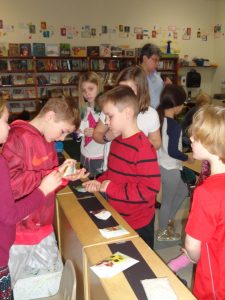 Zip! Zing! Another week is done. It has been full of fable writing and science experiments, math fact checks and applied problem solving strategies. We’ve begun reading Wonder, our seventh chapter read-aloud. It seems like we are ready for a deeper read. And a more challenging subject to add to our year long conversation about what it means to act and behave in kind ways.
Zip! Zing! Another week is done. It has been full of fable writing and science experiments, math fact checks and applied problem solving strategies. We’ve begun reading Wonder, our seventh chapter read-aloud. It seems like we are ready for a deeper read. And a more challenging subject to add to our year long conversation about what it means to act and behave in kind ways.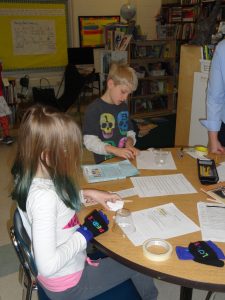 Some hypotheses are that the largest seed will sprout, while other think the smallest seed will sprout first. Some students chose the seed they had watered most and others chose the seed that was smoothest. We are waiting to see.
Some hypotheses are that the largest seed will sprout, while other think the smallest seed will sprout first. Some students chose the seed they had watered most and others chose the seed that was smoothest. We are waiting to see.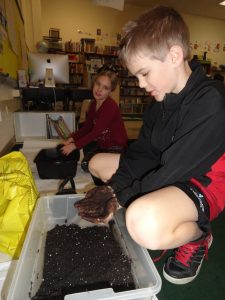 Our final project in this study is to discover answers to the questions: What causes the variation we see when we look around? How are traits passed down in families? How can we use science to predict possible traits and explain the variation we see in both plants and humans? We began this Project Lead the Way (PLTW) unit with a story. A class went to a farm on a field trip and the farmer asked the class if they would help him understand why the plants he grew had purple stems, when the parent plant that had come from did not. The color was a surprise and did not seem logical or possible, but it had occurred. We are going to experiment along with those students to see what we can discover.
Our final project in this study is to discover answers to the questions: What causes the variation we see when we look around? How are traits passed down in families? How can we use science to predict possible traits and explain the variation we see in both plants and humans? We began this Project Lead the Way (PLTW) unit with a story. A class went to a farm on a field trip and the farmer asked the class if they would help him understand why the plants he grew had purple stems, when the parent plant that had come from did not. The color was a surprise and did not seem logical or possible, but it had occurred. We are going to experiment along with those students to see what we can discover. We began this process by taking a trait survey. The first question was to see if we could taste a powdered chemical, PTC. Some people can and some people cannot. I could not, but it was immediately obvious that other could. Check with your child to see if this is a trait they inherited. We also surveyed things like being able to roll your tongue, having dimples or freckles, being able to play an instrument or a sport, etc. There are sixteen items on our survey. Some of them are inherited traits and some of them are learned. We will compare individual surveys and compile the class data to see what questions we can answer and discover if there are any trends. We’ll learn how to display our data in graphs of various forms.
We began this process by taking a trait survey. The first question was to see if we could taste a powdered chemical, PTC. Some people can and some people cannot. I could not, but it was immediately obvious that other could. Check with your child to see if this is a trait they inherited. We also surveyed things like being able to roll your tongue, having dimples or freckles, being able to play an instrument or a sport, etc. There are sixteen items on our survey. Some of them are inherited traits and some of them are learned. We will compare individual surveys and compile the class data to see what questions we can answer and discover if there are any trends. We’ll learn how to display our data in graphs of various forms.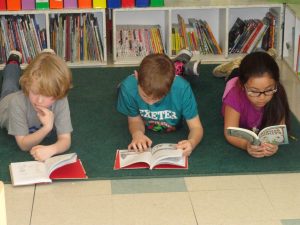 Something different you may notice on the work your children bring home next week are scores of how many correct out of the number of items on the sheet. I don’t usually score work like that because it can be defeating for some and competitive for others – a real disruption to learning in the classroom. The student focus turns to the number, rather than the important thinking and focused attention that has been used to complete the task.
Something different you may notice on the work your children bring home next week are scores of how many correct out of the number of items on the sheet. I don’t usually score work like that because it can be defeating for some and competitive for others – a real disruption to learning in the classroom. The student focus turns to the number, rather than the important thinking and focused attention that has been used to complete the task. The reason for the scores at this point however, is to help the children notice if they are reading directions and actually doing what is expected of them. Throughout the year when we’ve noticed that children have missed part of the direction, we stop the class and verbally remind them. We are not able to do this during the upcoming state testing. We are hoping to help the children recognize the importance of reading the entire direction (they are lengthy and complex on the tests) before even beginning the first part of the task.
The reason for the scores at this point however, is to help the children notice if they are reading directions and actually doing what is expected of them. Throughout the year when we’ve noticed that children have missed part of the direction, we stop the class and verbally remind them. We are not able to do this during the upcoming state testing. We are hoping to help the children recognize the importance of reading the entire direction (they are lengthy and complex on the tests) before even beginning the first part of the task.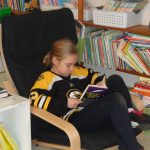 We won’t do this for long, but hopefully long enough so children become a bit more aware of how they can completely present their understanding and knowledge. We are hoping this is brief and gentle reminder to let them know what they can easily do without worry or stress. If you’re able to have light conversations about this at home, it would be appreciated. The papers will be in next week’s collection.
We won’t do this for long, but hopefully long enough so children become a bit more aware of how they can completely present their understanding and knowledge. We are hoping this is brief and gentle reminder to let them know what they can easily do without worry or stress. If you’re able to have light conversations about this at home, it would be appreciated. The papers will be in next week’s collection.